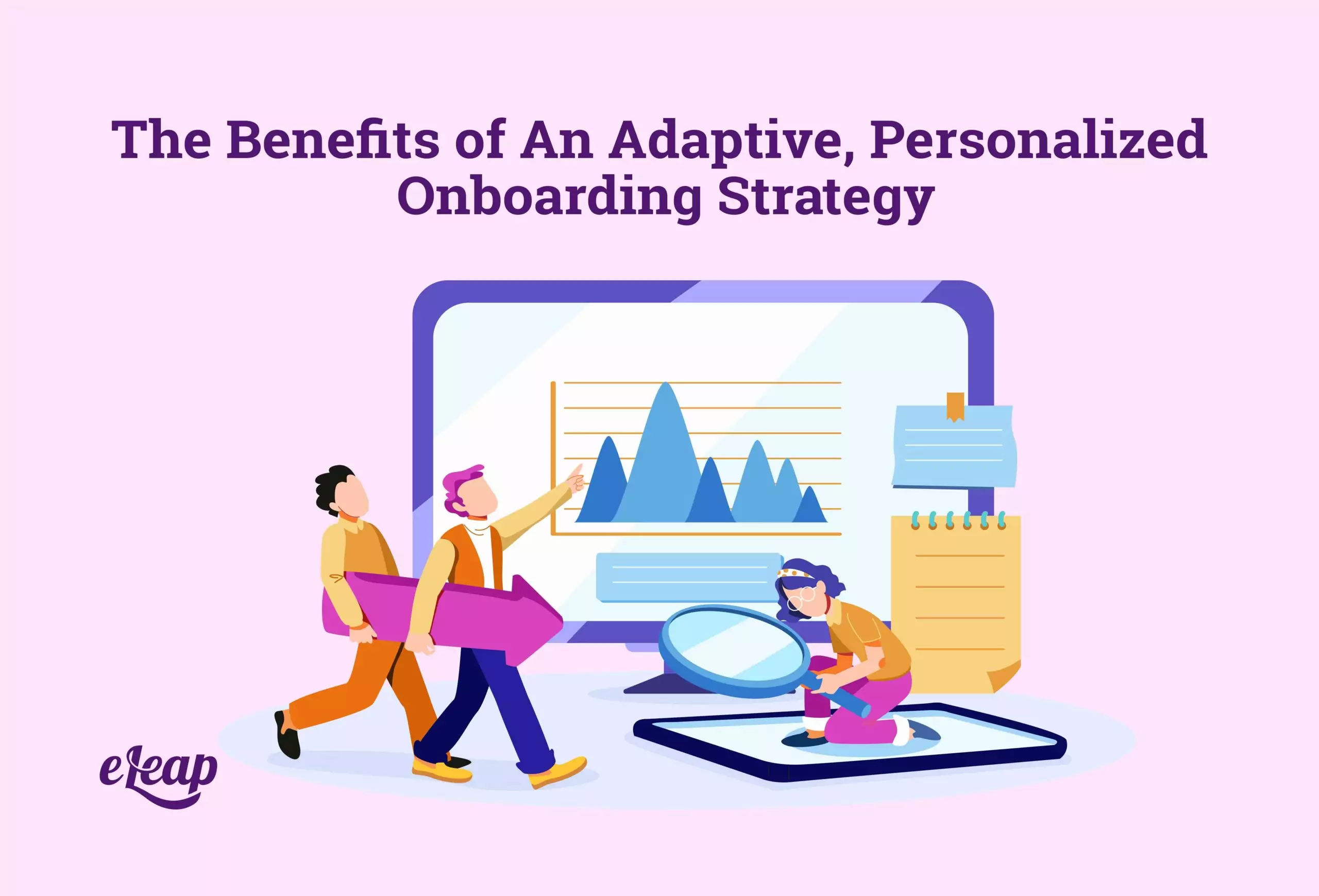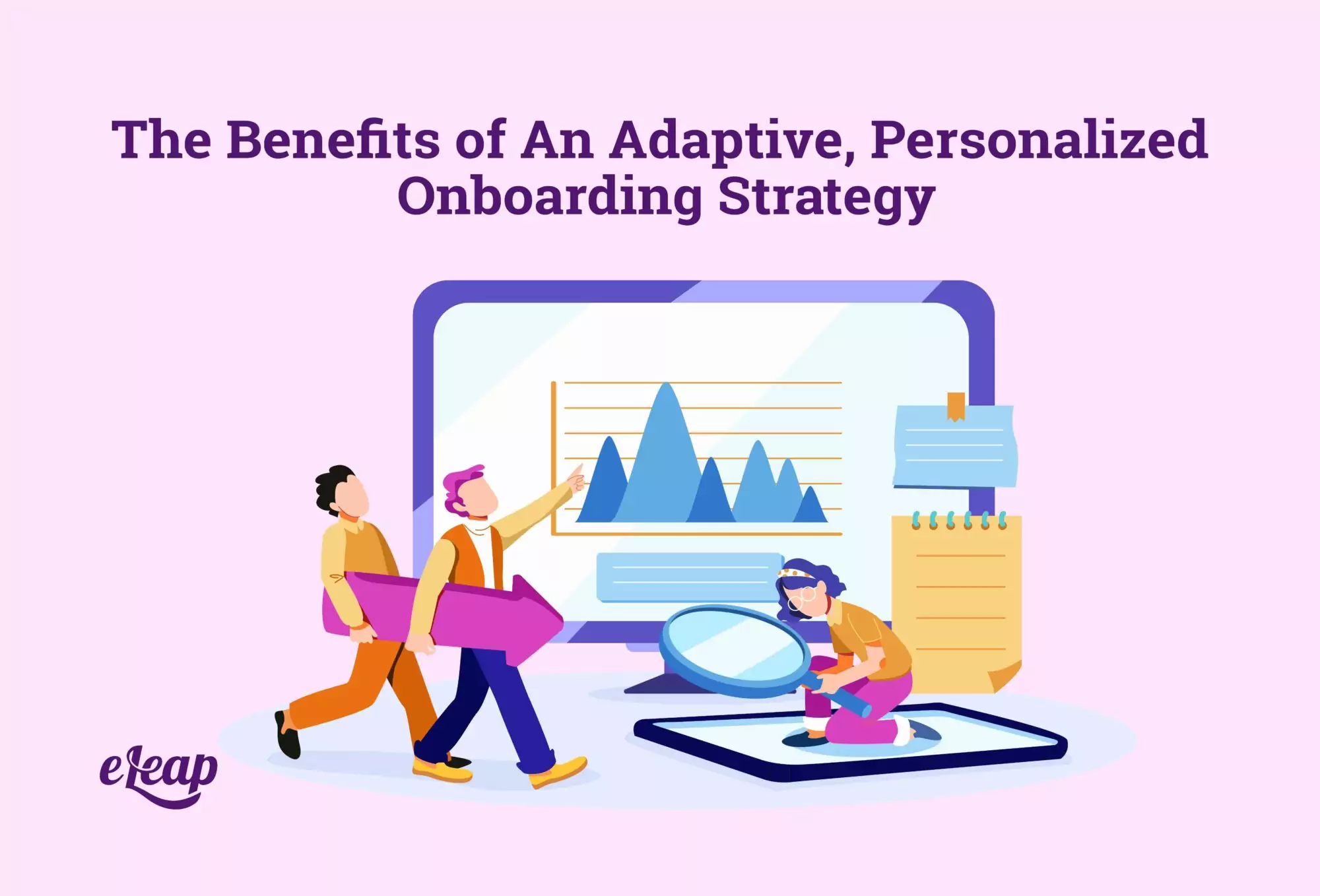The Benefits of An Adaptive, Personalized Onboarding Strategy

Your people aren’t identical. Why should their onboarding process be? Granted, you do want to have some structure in place and have an actual onboarding process, but it should be flexible enough to be adapted to the various people that you bring into the organization. Some people might need more time with training courses. Others might need a little more of a push to get into the culture. Whatever the case may be, you’re never going to hire two people with the same process, and if you do, you’re not maximizing the individuality of your team.

One Size Does NOT Fit All
A lot of organizations are already discussing adaptive onboarding for customers but have failed to translate the value that it could hold for candidates. The problem here is that there is too much information given at once, and it’s often suggested that certain trainees simply “disregard” what isn’t relevant. New hires shouldn’t have to be the ones to decide whether the information is relevant or not. With tailored onboarding, you’ll be able to give each person focused attention and help create an individualized learning and development path within the organization.
This leads to increased efficiency, as well as less time in training and onboarding because people get through it quicker with a customized approach. It can also help improve weak spots quicker and identify areas for upskilling, and so much more. We live in the digital world where technology is capable of doing so much more for training and development. It only makes sense that organizations take advantage of that when building their teams.
Benefits of Adaptive Learning
Because adaptive learning takes a data-driven approach, it’s easy to deliver personalized learning at the scale that employees need to digest content throughout the onboarding process. It considers several factors, including the learning capabilities of the end-user, as well as their strengths and weaknesses, and patterns of engagement. Some of the biggest benefits reported by those who use adaptive onboarding and training methods are listed below.
Flexibility
In the modern digital environment where we work and learn, it doesn’t make sense to stick to a rigid, regimented training program that offers “one-and-done” learning for every single user. Instead of worrying about all the possible things employees need to know as a whole, the onboarding process can focus on the specific needs of the person being brought on at that time and what they require to learn how to do their jobs effectively.
Clarity
Clarity in priorities is another perk of adaptive onboarding processes. Instead of worrying about everyone getting the right information, trainers and leaders can zone in on exactly what people need to learn for their roles and help clarify the priorities and L&D expectations as they become part of the team. Employees will also have a better focus on and understanding of what is expected of them in their roles.
Insights and Improvements
When onboarding programs are tailored to each individual, organizations will be able to gain deeper insight about the focused process of bringing on employees within each role or department. This data can help develop better training and onboarding processes, improved learning and development opportunities, and more.
This can also help leaders to reassess their learning management systems and the courses they are offering to ensure that each learner gets the education and training that they need. Analytics will help you track everything so that it’s easy to work with adaptive onboarding.
Improved Engagement
Employee engagement is a big perk that comes from adaptive onboarding and training. It gives people the chance to have a value-added experience and use technology that can adapt in real-time to their needs. Employees are getting used to instant gratification. If they are subject to long, generic training sessions where they gain little value, they’re not going to be motivated to grow and learn. However, if you deliver exactly the education and onboarding that a candidate needs, it gives them immediate value and that leads to more motivation to learn and excel in onboarding and beyond.
How to Succeed with Adaptive Onboarding and Learning
There’s no single strategy that’s going to make adaptive onboarding work for every organization. However, there are some best practices that everyone can keep in mind. To begin, make sure that continuous learning and development are a part of your culture from day one. Then, utilize the data sources that you have to figure out which insights can help create the ideal onboarding and learning programs for each candidate.
You’ll want to look at things like:
- Demographics
- Role/position
- Context of what’s happening surrounding the candidate
- Expressed desires for growth/knowledge gaps identified
- Current results
These are the elements that will give you a 360-degree view of each employee so that you can help create the personalized training experience that they need. Once you’ve got this information, you can then move on to developing content and resources based on those needs. Microlearning is going to come in handy here, giving trainees quick, easily digestible content that’s more flexible than a day-long training class.
Of course, there’s more to it than that. There’s also a host of adaptive technology that can be employed to help employees live up to their training goals and learn in a way that works for them. Online training tools and a digital adoption platform will take you far, but you’ll also want to consider how automation and AI can help you improve your adaptive onboarding strategies and ensure that it creates a consistent journey from onboarding to future training and beyond.
The Bottom Line
Today, companies are changing their ways for several reasons. One of the biggest reasons is the growing demand from employees for better resources and solutions. That includes a more customized, personalized onboarding experience that doesn’t make someone feel like they’re just being shuffled through the motions until they can be set to task on their own. For organizations that want to increase engagement and retention, adaptive training and learning are essential. Contact the team at eLeaP for a free consultation!